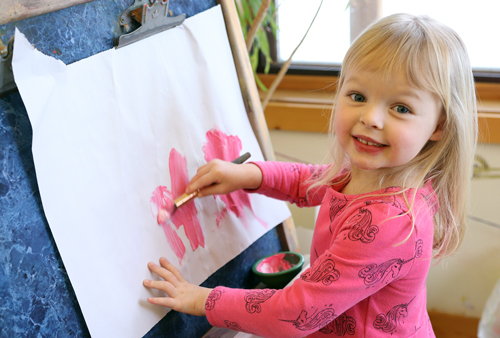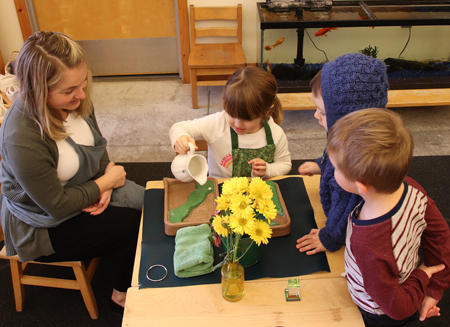 One of the most challenging parts of being a “Montessorian” is explaining the method to other people. We’ve all tried to come up with the perfect elevator speech and the most compelling case to sway a skeptic. However, it seems that most of the push-back is founded on misunderstandings. Among the points of contention is the idea that Montessori environments are too structured and don’t allow for creativity. It is true that Montessori materials are rooted in the real world rather than fantasy (research shows most children under five can not distinguish between what is real and imaginary); yet, a fundamental principle of the Montessori method is to value process over product.
One of the most challenging parts of being a “Montessorian” is explaining the method to other people. We’ve all tried to come up with the perfect elevator speech and the most compelling case to sway a skeptic. However, it seems that most of the push-back is founded on misunderstandings. Among the points of contention is the idea that Montessori environments are too structured and don’t allow for creativity. It is true that Montessori materials are rooted in the real world rather than fantasy (research shows most children under five can not distinguish between what is real and imaginary); yet, a fundamental principle of the Montessori method is to value process over product.
Creativity is defined as, “the use of the imagination or original ideas, especially in the production of an artistic work” (Oxford Dictionary). The clearest example of this is on a primary art shelf. We value the child’s process by choosing art mediums for them to explore rather than paint by number type crafts. Your primary child might bring home an easel painting from their Montessori environment but probably not a perfectly made snowman that looks just like the model an adult made. Where would the originality be in that? If a child didn’t come up with it themselves, they are not exercising their creative brain.
 The Montessori method is also inherently creative because we only provide children with the keys to the world. Rather than providing the child with every experience, we give them the sufficient minimum of information needed to learn the remaining elements on their own. For example, Montessori primary guides only directly teach six land and water forms so the child can independently discover the rest. They are given the opportunity to see a new water form in a book, research it and feel the joy that comes with unearthing new information. Similarly, children are invited to explore materials in new ways and even combine multiple materials as they innovate and imagine new possibilities. Our exact presentations are intentionally designed to be a jumping off point that pushes the child to exercise their creativity.
The Montessori method is also inherently creative because we only provide children with the keys to the world. Rather than providing the child with every experience, we give them the sufficient minimum of information needed to learn the remaining elements on their own. For example, Montessori primary guides only directly teach six land and water forms so the child can independently discover the rest. They are given the opportunity to see a new water form in a book, research it and feel the joy that comes with unearthing new information. Similarly, children are invited to explore materials in new ways and even combine multiple materials as they innovate and imagine new possibilities. Our exact presentations are intentionally designed to be a jumping off point that pushes the child to exercise their creativity.
So how can we support children’s creativity outside of school? Ask open-ended questions. Let children explore to answer questions on their own. Let them take risks and make mistakes. Allow them to problem solve. Allow children to complete a task in a different way. Accept imperfection and embrace imagination rooted in the real world.